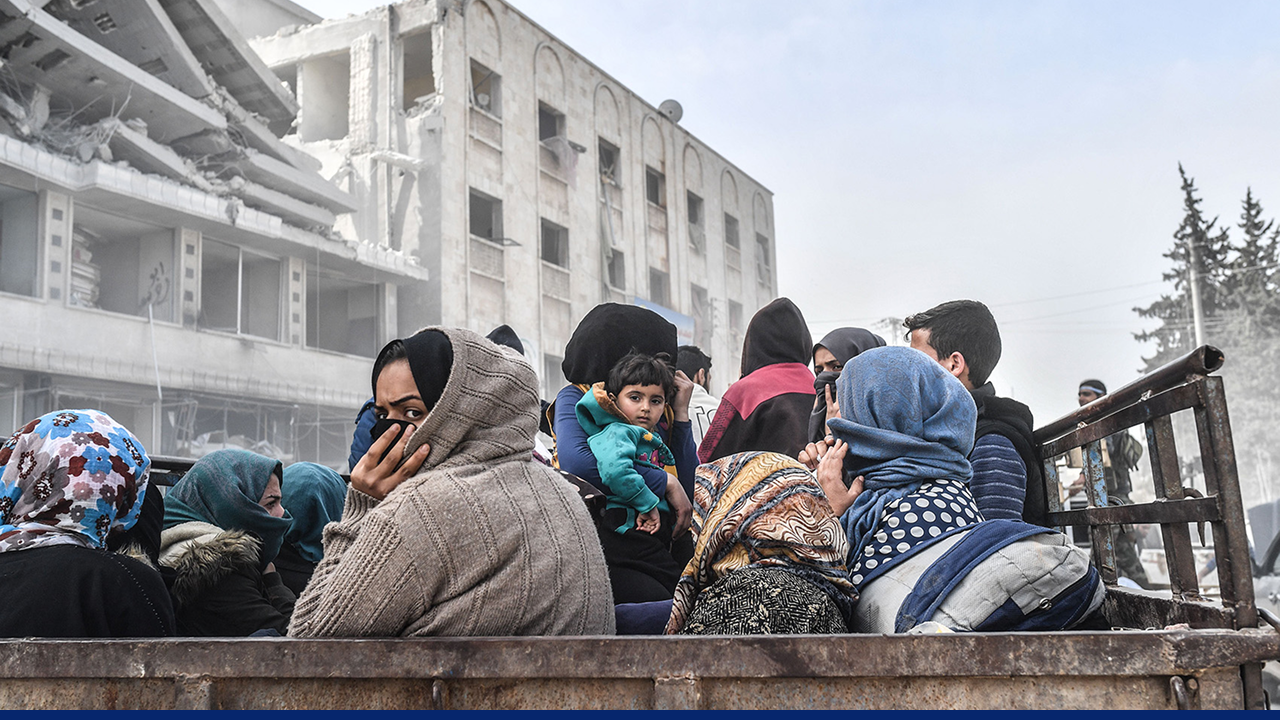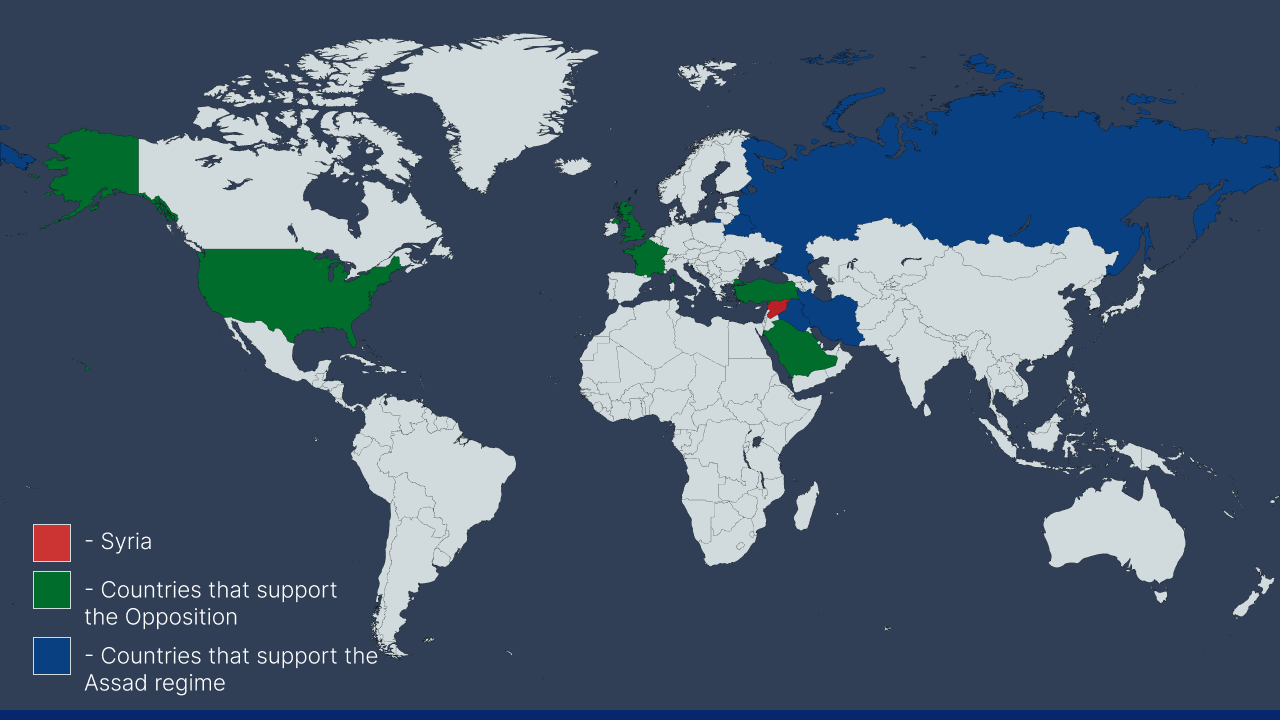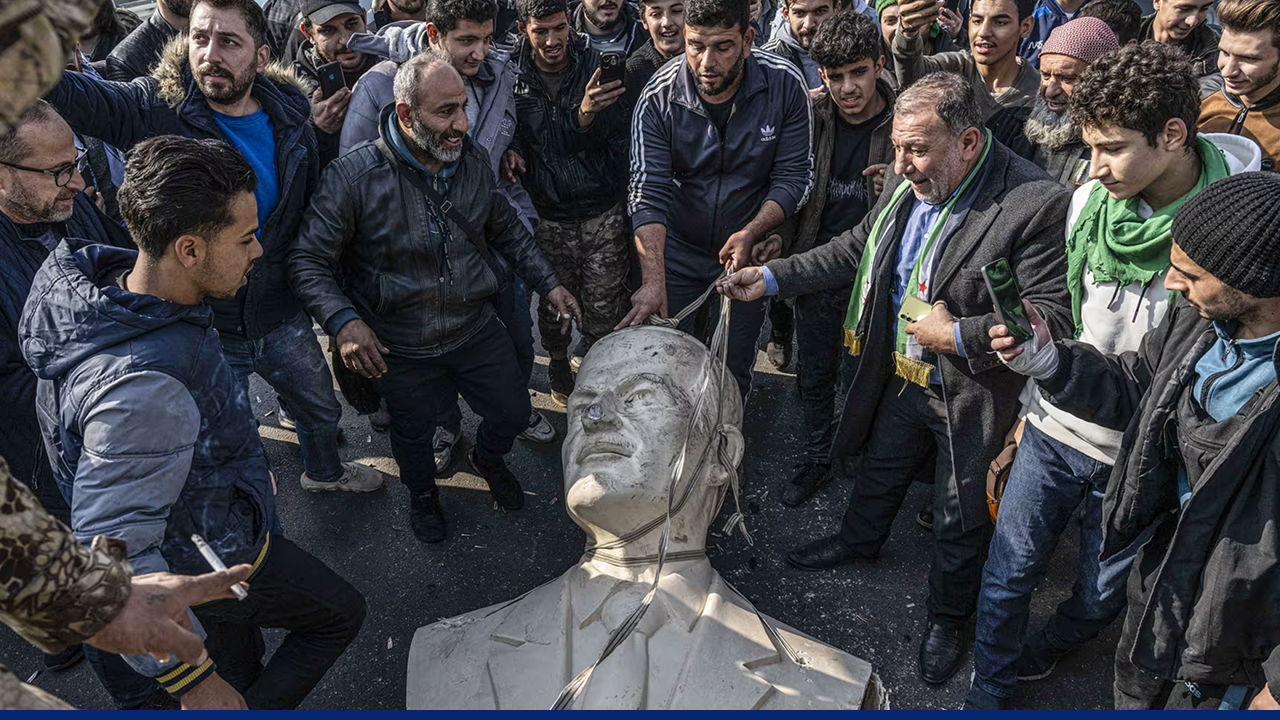29 May 2025
6 MIN READ
What is the Syria War?
Summary
The fall of Bashar al-Assad in December 2024 marked the end of a brutal era in Syrian history. But the collapse of one regime didn’t bring peace. It left Syria divided among rebel factions with competing visions for the future. How did the Syrian War begin, who’s involved, and what does the road ahead look like after more than a decade of civil conflict?
How did the Syria Civil War begin?
Syria’s post-colonial roots and sectarian tensions
Syria’s complex makeup, including Sunni Muslims, Alawites, Kurds, Druze, and Christians, has long created internal fault lines. The Alawite minority, empowered by the Assad family since 1970, ruled over a Sunni majority, often left politically marginalized.
From peaceful protest to civil war in Syria
The war in Syria began in 2011, when peaceful pro-democracy protests during the Arab Spring were met with violent state crackdowns. Within months, peaceful demonstrations transformed into armed resistance. By late 2011, over 2,000 civilians had been killed, triggering global outrage and laying the foundation for a full-blown conflict.
Major players in the Syrian Civil War
Rise and fragmentation of the Free Syrian Army (FSA)
Formed by military defectors in July 2011, the FSA was the first structured opposition force against Assad. Over time, internal disagreements and rising Islamist factions weakened its position, eventually leading to its rebranding under Turkish influence as the Syrian National Army (SNA).
Turkish-backed Syrian National Army in the Syria War
The SNA, built around Turkish interests, now dominates northern Syria. Their main targets include ISIS and Kurdish forces, particularly the YPG, whom Ankara considers terrorists.
The Kurdish role in the Syria Civil War

Syrians sit in the back of a truck as they flee the city of Afrin in northern Syria after Turkish forces and their allies took control of the Kurdish-majority city on March 18, 2018. Source: Bulent Kilic/AFP/Getty Images
Rojava and the Kurdish autonomy project
Kurdish forces, led by the YPG, took advantage of the war in Syria to form the autonomous region of Rojava. Their fight against ISIS earned US support, resulting in the formation of the Syrian Democratic Forces (SDF).
US withdrawal and Turkish offensives
In 2019, a sudden US troop withdrawal gave Turkey the green light to attack Kurdish-held areas. Displaced and isolated, Kurdish forces turned to the Assad regime for protection, altering the power balance once again.
Jabhat al-Nusra vs. ISIS: A war within the Syrian Civil War
The rise of Jabhat al-Nusra and extremist fragmentation
Jabhat al-Nusra emerged in 2012 as al-Qaeda’s official arm in Syria. Under Abu Mohammed al-Jolani, the group gained battlefield victories but clashed with more secular rebel groups and Western supporters.
ISIS and the declaration of a caliphate
In 2013, Abu Bakr al-Baghdadi announced a merger between Nusra and his Iraqi forces, forming ISIS. The union sparked infighting, as both groups sought to dominate the opposition to Assad. The resulting chaos allowed ISIS to capture swaths of territory in both Syria and Iraq.
The internationalization of the Syria War

Key players in the Syrian civil war. Source: The Sun
Proxy war in Syria: Russia, Iran, and the US
Russia and Iran propped up Assad with troops, airpower, and arms. The US and its allies, including France and the UK, supported moderate rebels and later led airstrikes against ISIS.
Assad’s human rights abuses and chemical warfare
The Assad regime committed widespread atrocities, including chemical attacks, torture, and mass executions. These actions prompted limited Western intervention but stopped short of full-scale military engagement.
Key turning points in the civil war Syrian conflict
The collapse of ISIS in Syria
By 2019, ISIS had lost 98% of its territory. Coalition airstrikes, Kurdish-led ground assaults, and targeted killings of leadership figures, including Abu Bakr al-Baghdadi, reduced the caliphate to scattered insurgents.
Assad’s last stand and the final offensive in 2024
With his allies distracted by other global conflicts, Assad lost control of key cities like Aleppo and Homs. On December 8, 2024, Damascus fell. Assad fled to Moscow, ending over 50 years of family rule.
Is the Syria War over?

Syrians remove a statue of Hafez al-Assad, the father of Bashar al-Assad, in Damascus. Source: Murat Sengul/Anadolu/Getty Images
Post-Assad Syria and the rise of new powers
Rebel coalitions led by Hayat Tahrir al-Sham (HTS) and the SNA now govern most of Syria. Ahmed al-Sharaa, a moderate figure, heads the transitional government and has even opened dialogue with Western leaders.
Fragile peace and lingering ethnic tensions
Despite peace deals, violence remains. A March 2025 massacre of over 1,000 Alawites sparked allegations of genocide. Some claim the victims were Assad loyalists, others say innocent civilians were caught in revenge killings.
Is this the end, or another chapter of chaos?
The future remains uncertain. Syria may follow the paths of Libya or Afghanistan, where revolution sparked temporary hope but failed to bring long-term peace. The coming months will decide whether Syria rises from the ashes or slips into a new era of instability.
Conclusion
The end of the Assad regime brought the Syrian War into a new phase, but not an end. What comes next is a fragile experiment in rebuilding a broken country. The power vacuum has been filled by rival rebel factions, uneasy alliances, and a transitional government trying to prove its legitimacy. Ethnic tensions, militia violence, and geopolitical interference still threaten stability.
Whether Syria finally breaks the cycle of authoritarianism and proxy war depends on what happens now. With the world watching, and Syrians still fighting to define their future, this chapter could become a turning point or a tragic repeat of the past.
People also ask
Who rules in Syria now?
As of early 2025, a transitional government led by Ahmed al-Sharaa is in place, backed by rebel coalitions like Hayat Tahrir al-Sham (HTS) and the Syrian National Army (SNA). Control is fragmented and varies by region.
Why is Israel attacking Syria?
Israel targets military installations in Syria linked to Iran and Hezbollah. These strikes aim to prevent weapons transfers and counter what Israel sees as growing Iranian influence near its borders.
Why is ISIS fighting in Syria?
Though the Islamic State lost its territorial caliphate, remnants of ISIS continue insurgent attacks to destabilize areas and reclaim influence. Their goal remains to establish a radical Islamic state.
Is Syria in danger?
Yes. Despite Assad’s fall, Syria remains volatile. Regional powers, armed factions, ethnic tensions, and economic instability still threaten the country’s security and future.
Is Syria free now?
Not entirely. Assad is gone, but full democratic governance is not in place. Different groups control various regions, and the transitional government’s ability to unify and stabilize the country is still uncertain.
Is Syria a republic or dictatorship?
Under Assad, Syria was a dictatorship despite its official title as a republic.
